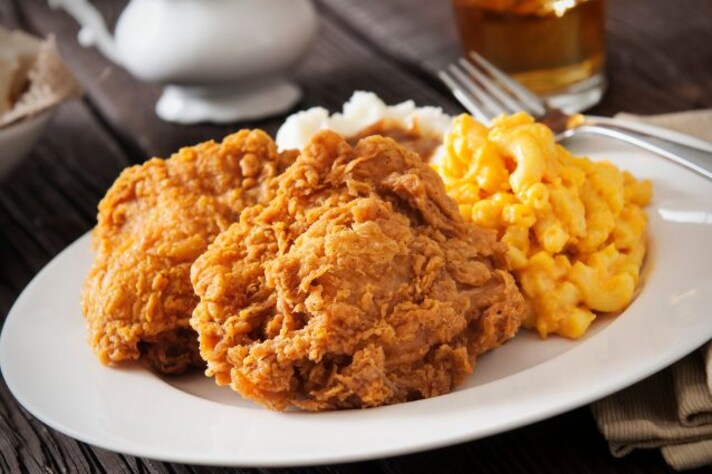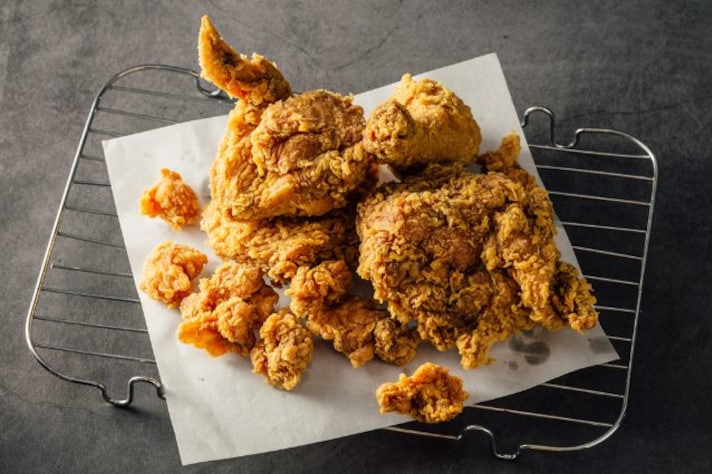
We’ve all seen those Instagram-worthy shots of fried chicken with that crispy, golden coating and juicy, tender interior. But what happens when you decide to go bold and try frying a whole chicken breast? Spoiler alert: it doesn’t turn out the way you imagine. While it seems like an easier option—just season it, coat it, and fry—this approach is a recipe for disaster. Frying a whole chicken breast results in uneven cooking, tough texture, and greasy failure. Let’s break it down, shall we?
The Thickness Factor
Fried chicken is all about balance. The coating should be crunchy, the meat should be juicy, and the cooking time must be precise. A whole chicken breast, however, is simply too thick for frying to be effective. The outer breading will crisp up long before the inside reaches a safe cooking temperature, leaving you with a burnt crust and an undercooked center. And no one wants to take a bite and find themselves chewing through a chewy, raw middle. If you think cutting corners with a whole breast will save you time, think again—you’re just setting yourself up for disappointment.
Juiciness or Dryness? You Can’t Have Both
One of the most frustrating things about frying a whole chicken breast is trying to retain that coveted juiciness. A thicker cut of meat takes significantly longer to cook through, which means the oil has more time to work its greasy magic. Frying at a lower temperature to cook it evenly leads to a soggy crust, while cranking up the heat to rush the process turns the meat dry and tough. You’re caught between a rock and a hard place. Either way, you’re compromising on the juicy, tender chicken that defines great fried chicken. So much for that crispy crunch and perfect bite.

The Even Cooking Challenge
It’s not just about thickness; it's about how chicken breasts cook. When frying, you need heat to penetrate the meat evenly for that perfect golden crust and tender inside. A whole breast, especially one with the bone removed, is just too unwieldy for this method. The thicker parts take longer to cook through, while the thinner areas run the risk of overcooking. Frying a whole breast often leads to uneven cooking, with the edges becoming dry while the center remains raw or undercooked. This unevenness is the enemy of perfect fried chicken, and it’s a battle you’ll almost certainly lose.
The Grease Problem
Ah yes, grease. The necessary evil of fried food. The goal of frying chicken is to get a crispy, flavorful exterior without drowning it in oil. A whole chicken breast, however, has a surface area that makes it harder to achieve this. When it cooks, the oil seeps into the breast while the outer crust becomes overly greasy, instead of crisp. Not only does this ruin the texture, but it also leads to an unpleasantly oily finish. In short, a whole chicken breast turns into a greasy, limp disappointment that even your favorite dipping sauce can’t save.

The Solution? Thinner Pieces, Better Results
So what’s the secret to perfect fried chicken? It’s simple: cut the chicken breast into thinner pieces. By cutting the breast into strips or smaller chunks, you ensure the meat cooks evenly and quickly, achieving that crispy outer layer and juicy interior. The thinner pieces give you the control you need over the cooking process, allowing you to maintain the perfect balance of textures. You get a much better ratio of crispy coating to tender, juicy chicken inside. If you're aiming for crispy fried chicken that's cooked perfectly every time, the whole breast is not the way to go.
Breading and Frying Techniques
When it comes to breading and frying, the texture plays a critical role in the success of your fried chicken. Thinner pieces of chicken allow for more even distribution of seasoning and batter, leading to a crunchier, more satisfying bite. With a whole chicken breast, the batter can’t form that signature, even coating. Instead, it might clump or form an uneven crust, resulting in bites that are either too greasy or too dry. The joy of fried chicken lies in that satisfying crunch that gives way to juicy, flavorful meat. If you’re working with thick chicken breasts, you’ll never achieve that perfect bite.
;Resize,width=767;)
